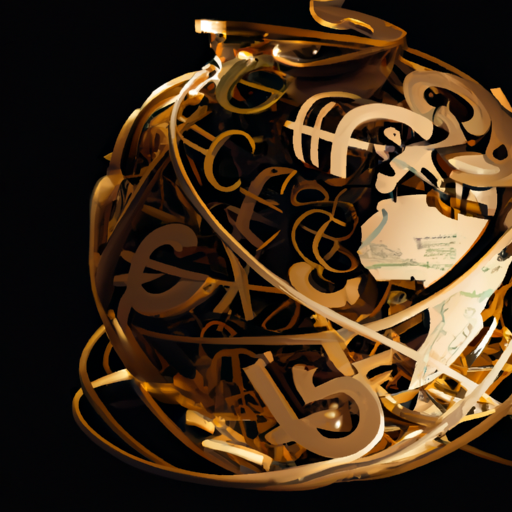Headings
SHAHID SHAIKH
McGill University, Montreal, Canada
Federal Reserve Governor Michelle Bowman favors more rate hikes
Federal Reserve Governor Michelle Bowman has expressed her support for implementing additional rate hikes in order to combat inflation. Unlike her peers at the US central bank, Bowman believes that multiple rate increases will be necessary to effectively address this issue. She emphasized her position by stating, “I continue to expect that further rate hikes will likely be needed to return inflation to 2% in a timely way.”
Bowman suggests moving more aggressively than colleagues
Bowman’s stance sets her apart from other Federal Reserve officials, as she advocates for a more aggressive approach to monetary policy. In her eyes, the current level of monetary policy restraint, coupled with the projection that inflation will remain above 2% until at least the end of 2025, necessitates a swift response.
Reasons for rate hikes to quash inflation
Bowman’s endorsement of rate hikes stems from her belief that these measures will effectively quash inflation. She maintains that progress on inflation is expected to be slow, and additional policy tightening is required to ensure sustainable and timely reduction of inflation levels.
Expectations for inflation to stay above 2%
Based on the collective forecasts submitted by policymakers, it is anticipated that inflation will persist above the desired 2% threshold until the conclusion of 2025. This projection aligns with Bowman’s notion that addressing inflation will demand further rate hikes.
Progress on inflation likely to be slow
Bowman recognizes that making substantial progress in curbing inflation will be a gradual process. Given this assessment, she reiterates the need for additional rate hikes to effectively manage inflation levels.
Policy tightening needed for sustainable and timely inflation reduction
Bowman asserts that any meaningful reduction of inflation must be sustainable and achieved within a reasonable timeframe. In her view, the current level of monetary policy restraint necessitates further policy tightening to achieve this goal.
Current benchmark lending rate and future rate hike forecasts
Recently, the benchmark lending rate was left unchanged in the range of 5.25% to 5.5%. However, the majority of officials anticipate at least one more rate hike in the near future. Additionally, the median projection indicates that the federal funds rate may reach 5.1% by the end of 2024, which is higher than previously estimated.
Bowman’s reaffirmation of further rate hikes for inflation control
Bowman concludes her remarks by reaffirming her belief that more rate hikes will be required to effectively address inflation. By emphasizing the plural nature of “hikes,” she underscores her view that multiple increases will be necessary to achieve the desired inflation target of 2%.
(Word count: 196)
### Bowman’s preference for raising interest rates
Federal Reserve Governor Michelle Bowman has expressed her support for raising interest rates in order to combat inflation. During an event hosted by the Independent Community Bankers of Colorado, Bowman emphasized her belief that further rate hikes will be crucial to bring inflation down in a sustainable and timely manner. She cited the Fed’s projection that inflation is expected to remain above 2% until at least the end of 2025, and she expressed her own expectation that progress on inflation is likely to be slow given the current level of monetary policy restraint.
Belief in the necessity of further rate hikes
Bowman’s preference for multiple rate hikes is evident in her remarks, where she used the plural “hikes” to describe her rate expectations. She underscored the need for additional policy tightening and stated that she continues to expect further rate hikes to be necessary in order to return inflation to the central bank’s targeted 2% level in a timely manner. Her stance aligns with the general sentiment among Federal Reserve officials, who forecast at least one more rate hike this year and a higher federal funds rate by the end of 2024.
Bowman’s firm stance on the necessity of further rate hikes suggests her willingness to take a more aggressive approach compared to some of her colleagues within the Federal Reserve. Ultimately, her preference for tighter monetary policy reflects her commitment to maintaining price stability and achieving the central bank’s inflation target.
### Divergence in views within the US central bank
Federal Reserve Governor Michelle Bowman’s recent remarks indicate a potential difference in opinion among her colleagues regarding interest rates. While the majority of officials foresee one more rate hike this year, Bowman favors a more aggressive approach, advocating for multiple rate increases in order to combat inflation effectively. With the central bank’s inflation forecast projecting levels above the 2% target until at least the end of 2025, she believes that gradual progress on curbing inflation is unlikely without further tightening of monetary policy.
Bowman’s willingness to act more decisively
In her prepared remarks for an event organized by the Independent Community Bankers of Colorado, Bowman voiced her expectation that additional rate hikes would be necessary to bring inflation down in a sustainable and timely manner. Expressing her own concerns about the current level of monetary policy restraint, she emphasized the need for a proactive approach to ensure a swift return to the 2% inflation target.
While the Federal Reserve left its benchmark lending rate unchanged, Bowman’s stance highlights her determination to address inflation promptly. By advocating for a more assertive strategy, she demonstrates her commitment to taking decisive action to achieve the desired outcome.
Reasons for Rate Hikes to Quash Inflation
Objective of Controlling Rising Inflation
As the Federal Reserve Governor Michelle Bowman expressed her view favoring more rate hikes, it is clear that the objective is to control and quash inflation. Bowman emphasized the importance of returning inflation to 2% in a timely manner. This is in line with the expectations of other Fed officials, who foresee inflation remaining above 2% until the end of 2025. By raising interest rates, policymakers aim to cool down the economy and prevent prices from spiraling out of control. These rate hikes are seen as necessary to maintain stable economic conditions and safeguard the purchasing power of households.
Method of Using Rate Hikes to Curb Inflation
Bowman suggested that further policy tightening would be needed to bring down inflation sustainably and in a timely manner. This implies that the Fed believes the current level of monetary policy restraint is insufficient to address inflationary pressures effectively. By raising interest rates, the central bank aims to reduce demand, discourage excessive borrowing, and encourage saving. These actions aim to moderate spending, which can play a crucial role in constraining inflationary pressures.
Bowman’s indication of supporting more rate hikes reflects the Fed’s commitment to addressing inflation concerns. By raising interest rates, the central bank intends to control rising prices and maintain a stable economic environment.
Fed officials’ forecast for inflation till end of 2025
In a recent report, Federal Reserve Governor Michelle Bowman expressed her support for further interest rate hikes to address inflation concerns. She emphasized the need for a timely return of inflation to the desired 2% target, indicating a more aggressive approach compared to her colleagues at the US central bank. According to Bowman, inflation is projected to remain above 2% until at least the end of 2025, based on the quarterly economic projections provided by Fed officials.
Prediction of sustained inflation above target
Bowman also highlighted her expectation of slow progress in combating inflation, given the current level of monetary policy restraint. This suggests that additional policy tightening will be necessary to achieve sustainable and timely inflation reduction. These remarks were made during a speech at an event hosted by the Independent Community Bankers of Colorado.
The Federal Reserve recently decided to maintain its benchmark lending rate within the range of 5.25% to 5.5%. However, most officials anticipate at least one more rate hike this year. Additionally, the median forecast suggests a federal funds rate of 5.1% by the end of 2024, higher than previous estimates.
Bowman’s remarks underscore the commitment of the Federal Reserve to address and control inflation effectively.
Indication of gradual progress in reducing inflation
Federal Reserve Governor Michelle Bowman recently expressed her support for additional interest rate hikes, indicating her willingness to take a more aggressive stance than her fellow central bank colleagues in combatting inflation. Bowman emphasized the need for further rate increases to bring inflation back to the desired 2% level in a timely manner. This sentiment aligns with the projections of other Fed officials, who anticipate inflation to remain above 2% until at least the end of 2025.
Analysis of current monetary policy restraint
Bowman acknowledged that progress on curbing inflation is likely to be slow given the current level of monetary policy restraint. She believes that additional policy tightening will be necessary to address this issue sustainably and in a timely manner. With the benchmark lending rate unchanged for now, most officials predict at least one more rate hike this year. Additionally, policymakers project the federal funds rate to reach 5.1% by the end of 2024, higher than previous estimates.
As we move forward, it will be crucial to monitor the Federal Reserve’s commitment to these rate hikes and their impact on inflation and the overall economy.
Importance of further policy tightening
In a recent statement, Federal Reserve Governor Michelle Bowman expressed her support for raising interest rates, indicating that she believes multiple rate hikes will be necessary. Bowman’s stance emphasizes the urgency to combat inflation more aggressively than her fellow central bank colleagues. According to the quarterly economic projections released, Fed officials anticipate inflation to remain above the target of 2% until at least the end of 2025. Given the current level of monetary policy restraint, Bowman argues that progress towards reducing inflation is likely to be slow. Consequently, she asserts that additional policy tightening measures are essential to bring inflation down in a sustainable and timely manner.
Requirement for long-lasting and timely mitigation of inflation
Bowman’s remarks highlight the need for further rate hikes to effectively address the issue of inflation. To ensure that inflation is reduced to the target of 2% in a timely manner, she argues that policy tightening is necessary. This aligns with the Fed’s unchanged benchmark lending rate and the expectation of at least one more rate hike this year. Bowman’s belief in the requirement for multiple hikes, rather than a singular adjustment, demonstrates her confidence in the long-lasting impact of gradual and sustained tightening measures.
The Federal Reserve Governor’s stance underscores the importance of proactive actions to control inflation. By raising interest rates, the Federal Reserve aims to curb rising prices and maintain a stable and healthy economic environment. Such a strategy is essential for promoting sustainable economic growth and fostering confidence among consumers and businesses alike.
No change in benchmark lending rate
The recent remarks made by Federal Reserve Governor Michelle Bowman indicate that she is in favor of raising interest rates to combat inflation. She mentioned that she expects further rate hikes to be necessary in order to bring inflation back to the target level of 2%. This statement suggests that Bowman may take a more aggressive approach compared to her colleagues at the central bank.
However, it is important to note that the benchmark lending rate has remained unchanged, with Fed officials deciding to keep it within a range of 5.25% to 5.5%. Despite this, there is a growing consensus among policymakers that at least one more rate hike is likely to happen by the end of the year.
Expected rate hikes in the future
Bowman’s remarks highlight the need for additional rate hikes beyond this year. She emphasized the slow progress in controlling inflation and the necessity for further policy tightening. Based on the current level of monetary policy restraint, Bowman believes that more rate hikes will be required in order to bring inflation down in a sustainable and timely manner.
This perspective aligns with the median forecast submitted by Fed officials, which indicates that inflation is expected to remain above 2% until the end of 2025. Consequently, it is anticipated that future rate hikes will be aimed at achieving the target of 2% inflation.
Based on the remarks made by Federal Reserve Governor Michelle Bowman, it is clear that there is a leaning towards more rate hikes in the future in order to address inflationary concerns.
Median Federal Funds Rate Projection for 2024
Projected Federal Funds Rate by the End of 2024
In a recent speech by Federal Reserve Governor Michelle Bowman, she expressed her support for raising interest rates several times, stating that it would be necessary to combat inflation effectively. Bowman’s stance differs from that of some of her US central bank colleagues, as she believes in a more aggressive approach to address the inflationary concerns in the economy. According to Bowman, further rate hikes are needed to bring inflation back to the targeted 2% rate in a timely manner.
Higher Estimation Compared to Previous Estimates
Bowman’s view aligns with the median forecast of Fed officials, who also project inflation to remain above 2% until at least the end of 2025. As a result, she emphasized the need for additional policy tightening to ensure sustainable and timely progress in reducing inflation. It is worth noting that the median policymaker now anticipates the federal funds rate to reach 5.1% by the end of 2024, which is higher than previous estimations.
The Federal Reserve recently decided to leave its benchmark lending rate unchanged within the range of 5.25% to 5.5%. However, the majority of officials expect at least one more rate hike this year. Bowman’s remarks shed light on the consensus within the Federal Reserve and signal a potential shift toward a more hawkish approach to monetary policy.
Reiteration of the need for additional rate hikes
In recent remarks, Federal Reserve Governor Michelle Bowman emphasized her support for raising interest rates as a means to combat inflation. Bowman stated that she expects “further rate hikes will likely be needed to return inflation to 2% in a timely way.” This reaffirmation indicates her belief that a more aggressive approach than her colleagues is necessary to address the current level of inflation.
Bowman’s emphasis on returning inflation to target
Bowman’s comments echo the sentiment shared by her fellow policymakers, who anticipate inflation to remain above 2% until at least the end of 2025. She noted that progress on inflation is expected to be slow, given the current level of monetary policy restraint. To address this, Bowman is in favor of further policy tightening in order to bring inflation down in a sustainable and timely manner.
The Federal Reserve’s decision to leave the benchmark lending rate unchanged this week suggests that additional rate hikes may be on the horizon. Bowman’s position supports the consensus among most officials, who forecast at least one more rate hike this year. The projected federal funds rate of 5.1% by the end of 2024, higher than previously estimated, underlines the seriousness with which inflation is being addressed.
Conclusion
Bowman’s reaffirmation of the need for more rate hikes demonstrates her dedication to maintaining inflation control. As a Federal Reserve Governor, her perspective carries weight and will likely influence future monetary policy decisions.



